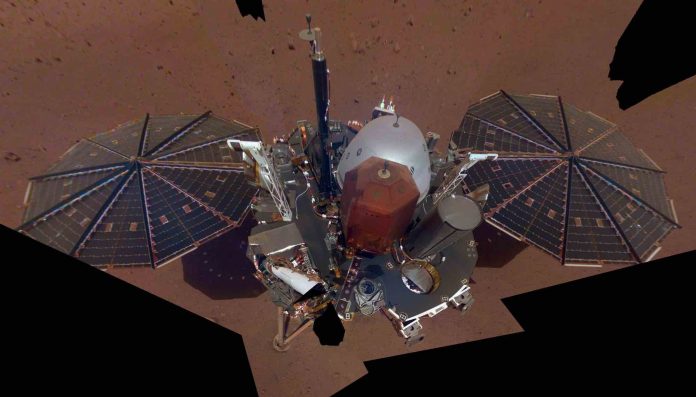NASA’s InSight spacecraft is now parked on Mars and gearing up to spend the next two years probing the interior of the Red Planet.
But first, a selfie.
On Dec. 6, the 800-pound lander stretched out its six-foot-long robotic arm and used its camera to snap the first of what is likely to be a series of self-portraits. The photo — a mosaic stitched together from 11 separate images — shows InSight’s solar panels and its deck laden with science instruments.
The photo also shows the dusky red soil of the lander’s new home, a broad plain near the Martian equator known as Elysium Planitia.
InSight also beamed back 52 photos of its immediate environment, which were used to create a mosaic of a 4×7-foot area of the surface directly beside the lander. The area is starkly barren but pockmarked in places.
Unlike Curiosity and other NASA rovers on Mars, InSight isn’t mobile. Instead, the lander is stuck on Elysium Planitia, which is so flat that mission scientists playfully dubbed it “the biggest parking lot on Mars.”
“The near-absence of rocks, hills and holes means it’ll be extremely safe for our instruments,” Bruce Banerdt, InSight’s principal investigator at NASA’s Jet Propulsion Laboratory in Pasadena, California, said in a written statement. “This might seem like a pretty plain piece of ground if it weren’t on Mars, but we’re glad to see that.”
InSight is about 340 miles from Curiosity, which has stopped to take several selfies of its own as it trundles along the Martian surface. Curiosity landed on Mars in August 2012 and has been exploring a site called Gale Crater ever since.
The $800-million InSight mission will measure the frequency and magnitude of marsquakes and study how heat from deep inside the Red Planet makes its way to the surface.
Since InSight touched down on Nov. 26, NASA engineers have been powering up and testing each of the lander’s instruments in anticipation of their placement directly on the planet’s surface. This process is expected to take two to three months.








